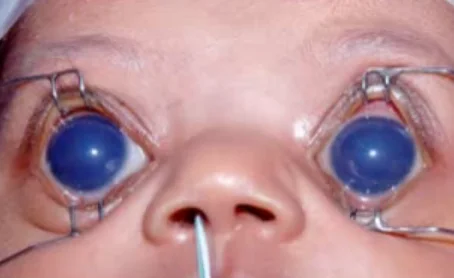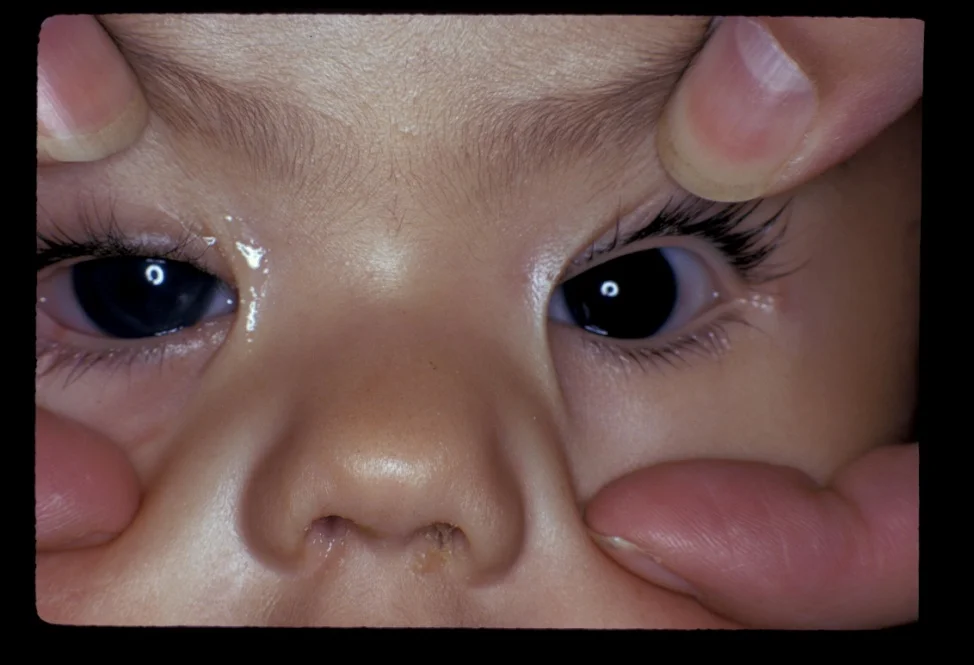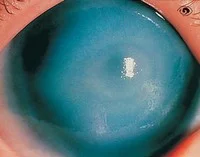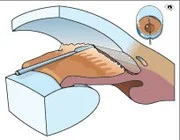Congenital Glaucoma

Congenital Glaucoma
- Congenital glaucoma is a rare form of glaucoma.
- Affected infants may be born with a high intraocular pressure.
- Both eyes
- Boys are affected slightly more frequently than girls.

Onset: antenatally to 2 years old
Symptoms
- Irritability
- Photophobia
- Epiphora
- Poor vision
Signs
- Elevated IOP
- Buphthalmos
- Haab’s striae
- Corneal clouding
- Glaucomatous cupping
- Field loss
Clinical Appearance
- Enlargement of the globe (buphthalmos)
- The anterior chamber is deep.
- The cornea and sclera expand, principally at the corneoscleral junction.

Buphthalmos and cloudy corneas (corneal edema)


- If the IOP is lowered, this opacity is partially reversible.
- As a result of the optic nerve damage and/or corneal opacity, children with congenital glaucoma may be permanently visually impaired.


Infantile Glaucoma
- Infantile glaucoma is also congenital glaucoma.
- However, intraocular pressure starts to rise at some time during the first years of life.
- The cause for this IOP increase is basically the same as in congenital glaucoma, but it occurs later since the anterior chamber angle is more mature than when glaucoma is present at birth.
Juvenile Glaucoma
- Juvenile glaucoma is an IOP increase that occurs in an older child or young adult and is often inherited.
- The clinical features as well as treatment of juvenile glaucoma are quite similar to adult Primary Chronic Open-Angle Glaucoma (POAG).
Treatment
-
The treatment is primarily surgical.
Different surgical procedures
- Goniotomy
- Trabeculotomy
- Trabeculotomy + trabeculectomy
Supplemental treatment options are
- Medical therapy
- Implant surgery
GONIOTOMY TRABECULOTOMY

